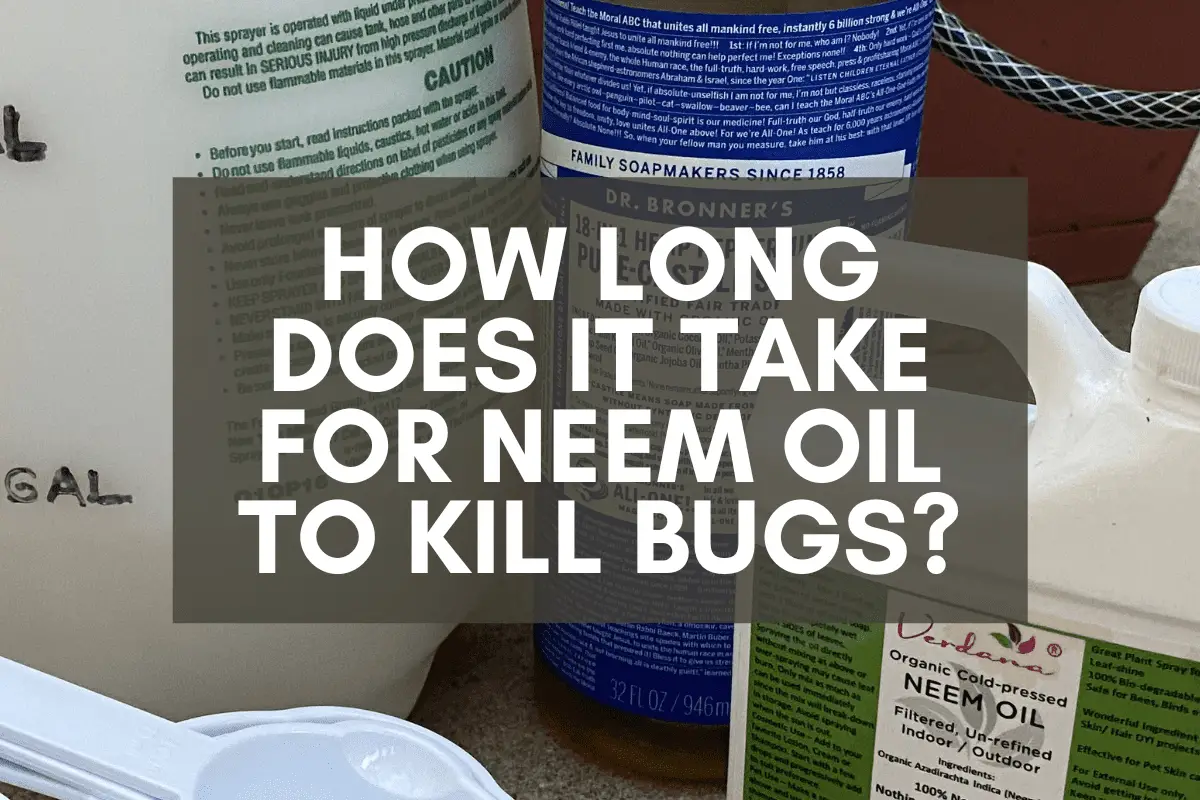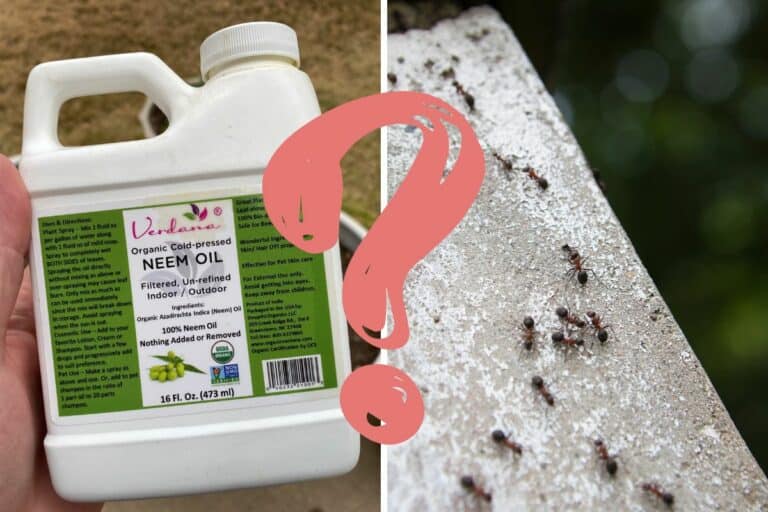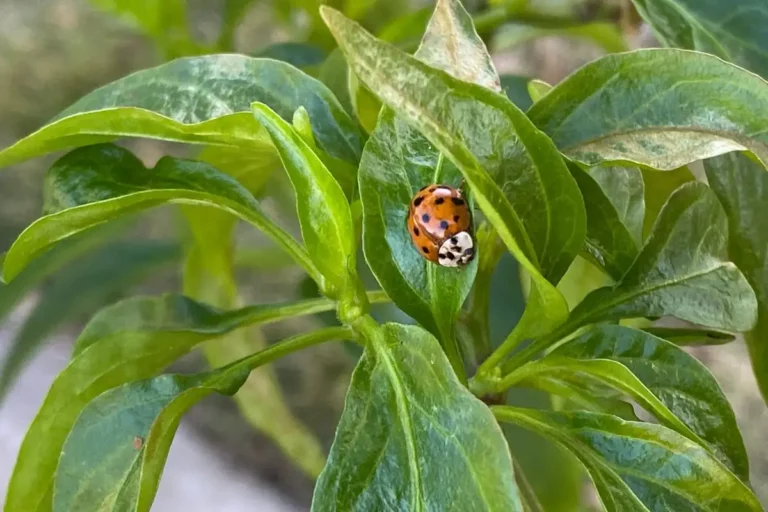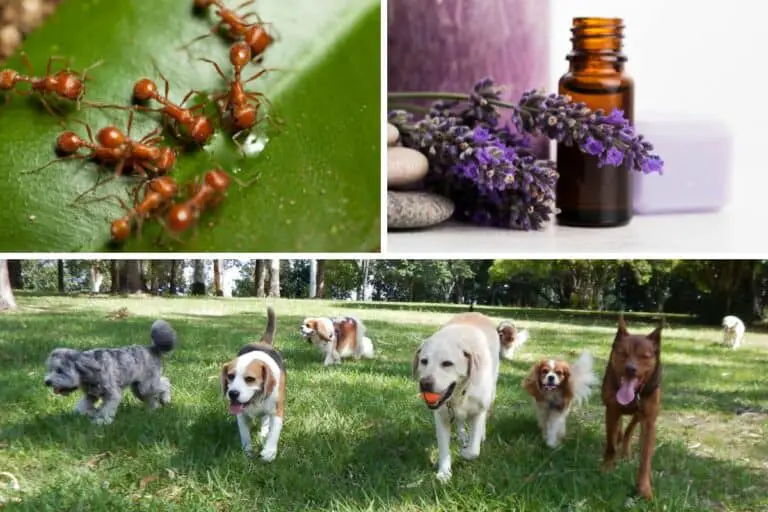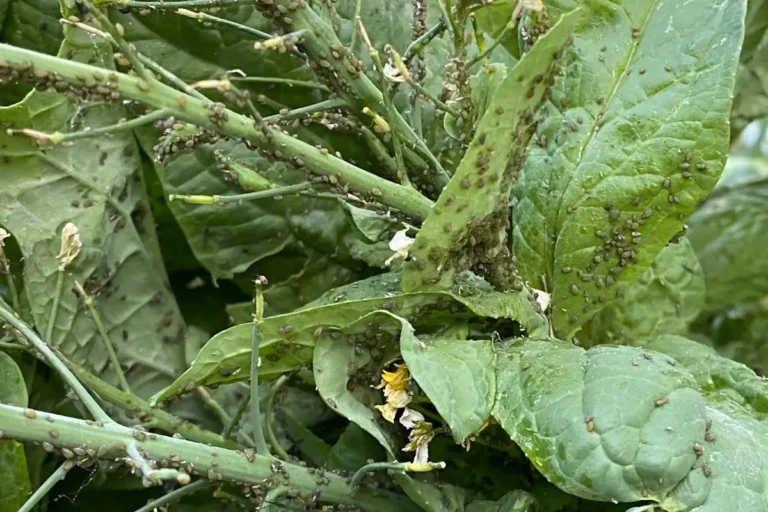How Long Does It Take for Neem Oil to Kill Bugs?
Derived from neem tree seeds, neem oil is an incredible natural insecticide. It’s mostly harmless to beneficial pollinators, but it’ll wreak havoc on the biological and hormonal systems of aphids, spider mites, whiteflies, and many other garden pests.
Unfortunately, neem oil doesn’t typically kill bugs on contact, which raises an important question: How long does it take for neem oil to work?
Neem oil typically takes 3-4 days to kill most bugs, although 5-7 days is not unheard of, because it takes time for the oil’s chemical compounds to do their work. Larvae and soft-bodied nymphs are more vulnerable to neem oil while mature, hard-bodied bugs are less likely to die off.
The key with neem oil is patience and repetition. If you’ve got bugs in your garden, you’ll want to apply neem oil as soon as possible to halt their spread, then wait, reassess, and reapply as needed.
What you’ll find below is a list of several prominent garden pests that neem oil can kill as well as instructions for making a powerful homemade neem oil spray and applying it on or around your garden.

What Bugs Does Neem Oil Kill, and How Long Will It Take?
Researchers have shown that neem oil can impact a wide variety of pests in many different ways. In fact, some studies suggest that neem oil can kill over 200 bugs, impacting everything from how they feed and reproduce to whether or not they can lay eggs and molt.
Out of the 100 or so chemical compounds found in neem oil, azadirachtin is the most potent, responsible for 90% of the insecticidal impacts noted in various bug species.
In different bugs and to differing degrees, azadirachtin will disrupt feeding patterns, cause hormonal problems, interfere with fertility and reproduction, and inhibit growth and molting.
If you look below, you’ll find a list of numerous prominent garden pests that neem oil will impact in one way or another. But what I’ve learned over the years is this: Generally speaking, neem oil is much more effective when used on eggs, larvae, and nymphs than it is on full-grown adults.
| Bugs | Highly Effective | Moderately Effective | Slightly Effective |
|---|---|---|---|
| Aphids | ✔ | ||
| Armyworms | ✔ | ||
| Bean Beetles | ✔ | ||
| Beetles | ✔ | ||
| Cabbage Worms | ✔ | ||
| Cockroaches | ✔ | ||
| Crickets | ✔ | ||
| Flea Beetles | ✔ | ||
| Fleas | ✔ | ||
| Flies | ✔ | ||
| Fruit Flies | ✔ | ||
| Gnats | ✔ | ||
| Grasshoppers | ✔ | ||
| Hornworms | ✔ | ||
| Leaf-Footed Bugs | ✔ | ||
| Leafhoppers | ✔ | ||
| Leafminers | ✔ | ||
| Lice | ✔ | ||
| Mealybugs | ✔ | ||
| Midges | ✔ | ||
| Mites | ✔ | ||
| Mosquitoes | ✔ | ||
| Moths | ✔ | ||
| Potato Beetles | ✔ | ||
| Psyllids | ✔ | ||
| Sawflies | ✔ | ||
| Scales | ✔ | ||
| Spider Mites | ✔ | ||
| Squash Bugs | ✔ | ||
| Stink Bugs | ✔ | ||
| Thrips | ✔ | ||
| Weevils | ✔ | ||
| Whiteflies | ✔ |
What makes neem oil even such an amazing product is, compared to other insecticides, its incredibly low toxicity levels for humans and our furry friends alongside its relatively high toxicity levels for 200+ garden pests.
But as you can see in the chart above, neem oil doesn’t typically kill on contact. There are a few exceptions, which I’ll discuss in greater detail below, but neem oil is a slow-acting insecticide because it takes time for the chemical compounds to infiltrate and disrupt bugs’ biological and hormonal systems.

Mixing a Potent Neem Oil Spray: A Beginner’s Guide
When it comes to purchasing neem oil, you have two primary options to choose from.
On the one hand, you can buy a ready-made spray, which is more expensive but super convenient. The Bonide and Natria sprays work great, especially when it comes to indoor plants.
On the other hand, you can buy a neem oil concentrate and mix your own insecticidal spray sprays. This is my preferred approach because you’ll save a lot of money in the long run by foregoing the ready-made products for the concentrated ones.
Here’s a chart showing how much it’ll cost per fluid ounce if you buy the ready-made products versus the neem oil concentrates:
| Product | Bottle Size | Total Spray Produced | Average Cost Per Ounce |
|---|---|---|---|
| Bonide Ready to Use Neem Oil | 32 oz. | 32 oz. (1/4 gallon) | $.34 |
| Natria Neem Oil Spray | 24 oz. | 24 oz. (≈1/5 gallon) | $.46 |
| Bonide Neem Oil Concentrate | 16 oz. | 2,048 oz. (16 gallons) | $.01 |
| Neem Bliss Concentrate | 16 oz. | 2,048 oz. (16 gallons) | $.01 |
| Verdana Neem Oil Concentrate | 16 oz. | 2,048 oz. (16 gallons) | $.01 |
When you look at the cost breakdown–and realize just how many gallons of spray you can make with a single 16 oz. container of neem oil concentrate–this is a no-brainer to me. And if you follow my instructions below, it’ll take you only 5-10 minutes max to make a potent neem oil spray
So let’s get started!
To make a powerful neem oil insecticide, you only need 4 ingredients: a sprayer, liquid soap (to serve as an emulsifier), neem oil concentrate, and water. But here’s a step-by-step guide for those who are interested in learning more:
- Purchase a garden sprayer from Amazon or your local home improvement store.
- Buy a natural, high-quality liquid soap. Don’t use Dawn (it has additional chemicals you don’t need in your garden). Instead, buy one of these all-nature brands: Dr. Bonner’s, Mrs. Meyer’s, or Safer Brand.
- Select a neem oil concentrate. I’ve used Bonide Neem Oil Concentrate, Neem Bliss Concentrate, and Verdana Neem Oil Concentrate, and each of them work just fine.
- Fill a 1- or 2-gallon sprayer with water. You can do the same with a 16 oz. spray bottle.
- Add 1 tablespoon of liquid soap per gallon. Add ½ teaspoon to a 16 oz. bottle.
- Add 2 tablespoons of neem oil concentrate per gallon or ¾ teaspoon to a 16 oz. bottle.
- Shake well. For garden sprayers, you’ll also need to pump the handle to pressurize the tank.
Like I noted above, it’ll take you 5-10 minutes to follow these steps, and you’ll save you a lot of money if you make your own spray versus buying those pre-made bottles.
How Often Should Neem Oil Be Applied?
If you’re interested in using neem oil to counteract garden pests, you need to understand this one rule: You’ll need to reapply neem oil, sometimes multiple times, before you can claim victory over an infestation.
Simply put, you’re making a tradeoff when using neem oil (a great tradeoff, in my opinion!). You’re sacrificing insecticidal potency in favor of a natural, organic solution.
On the one hand, this means that you’re not killing bugs as quickly as you might otherwise kill them were you to use a product like Sevin or something even more chemically potent. On the other hand, you’re keeping your garden free of these nasty chemicals, which means you don’t have to worry when it comes time to harvest and eat your homegrown fruits and veggies.
When it comes to reapplying neem oil, I follow a few simple rules:
For minor or moderate infestations, neem oil should be applied every 7 days for 2-3 weeks. When it comes to major infestations–or highly destructive garden pests such as cabbage worms, flea beetles, spider mites, and squash bugs–neem oil should be applied every 4 days for 3-4 weeks.
This might sound a bit excessive, but if you’ve ever fought off a spider mite infestation, you know what can happen if you let up, even for a moment.
I saw this firsthand last year during two separate spider mite infestations–one I won, the other I lost. Here’s what happened.
On a small strip of property behind a detached garage, I decided in early summer to do something different with a dozen or so tomato plants. I wanted to try out some new things–new plant varieties, new planting and fertilizing methods, and careful bug observations.
As I’ve noted elsewhere on this site–in articles examining where spider mites come from, how they spread, and whether plants can recover from spider mites infestations–I noticed in early summer that spider mites were on one of the tomato plants, and instead of treating it immediately, I began observing them each day to see how long it’d take for them to spread across the plant.
Unfortunately for me, the spider mites spread much more aggressively than I could have imagined, and I quickly called off my experiment because they had managed to escape my secluded experimental growing area and threatened to spread to the rest of my garden.
Of the 10 or so tomato plants that I started with, I lost 3-4 of them, but I acted aggressively to stop the infestation–using the neem oil formula as well as the treatment schedule I outline in another article on the subject–and I eventually won. For a time, there were no spider mites remaining in my garden, and my plants looked amazing.
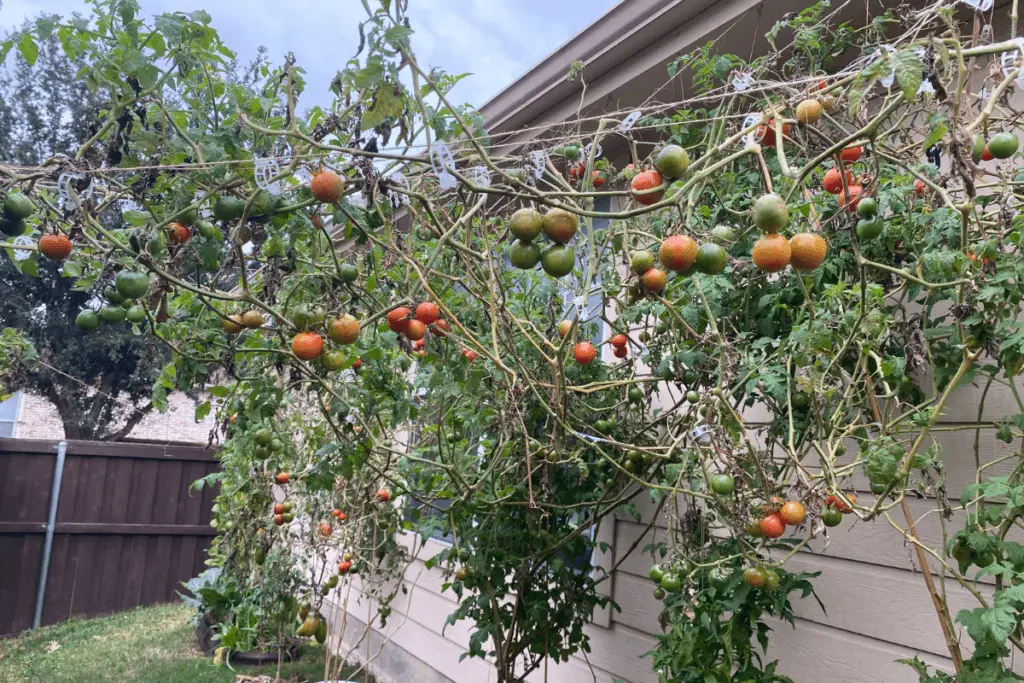
A month or so later, after my tomatoes were done producing but with time still left in the growing season, I replaced several tomato plants with a bed filled with green beans, bok choy, collards, and swiss chard.
For weeks, everything looked great, but out of nowhere, the spider mites showed up again, this time on my green bean plants. Unlike earlier in the season, when I had used neem oil aggressively and consistently, I wasn’t as attentive this time around.
Instead of applying neem oil every 4 days, I applied it every 7 days. And I missed an application here and there, which means there were times when I was reapplying neem oil only every 8-10 days. And unlike the earlier infestation, I often didn’t apply any insecticidal soap spray in the intervening days, which means I was placing a lot of faith in neem oil alone, and I also didn’t give much thought to the elements and how rain might rinse neem oil off of the plants.
You can probably guess what happened next: My green beans dried up and died, victims of the spider mites that I had beaten earlier in the year.
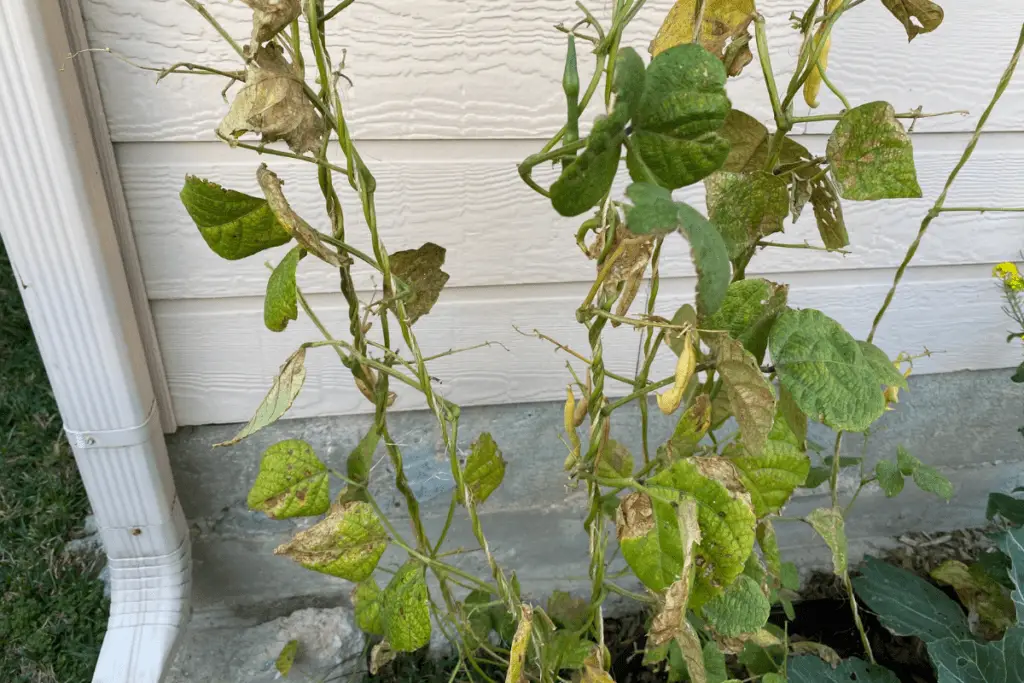
This experience taught me a valuable lesson: Neem oil is an incredible insecticide, but it needs to be reapplied frequently and consistently. To guarantee the best results, you should also apply soapy water sprays in between neem oil treatments to ensure that the bugs don’t have time to recuperate, reproduce, and retake control of your plants.
Does Neem Oil Kill on Contact?
If neem oil killed bugs on contact, it would truly be a miraculous solution for those, like me, who prefer to garden organically.
But neem oil only has this effect on certain pests, which means that the vast majority of bugs will live on for 3-7 days after a neem oil application, making it possible for them to lay eggs or even give birth as the azadirachtin slowly kills them off.
Neem oil will typically only kill the eggs, larvae, and nymphs of certain species on contact. When sprayed directly on mature bugs, neem oil may slow them down, disrupt their hormonal systems, cause infertility, or hinder molting and further growth, but it will not kill them on contact.
This is a major reason why it’s often necessary to reapply neem oil when dealing with garden infestations. The neem oil has a higher likelihood of killing young developing bugs, but it could take up to a week for adult bugs to die off, potentially giving them time to spread and reproduce before succumbing to the effects of azadirachtin.
Further Reading
If you’d like to learn more about how I’ve used neem oil to fight off spider mite infestations in my garden, check out these articles:
